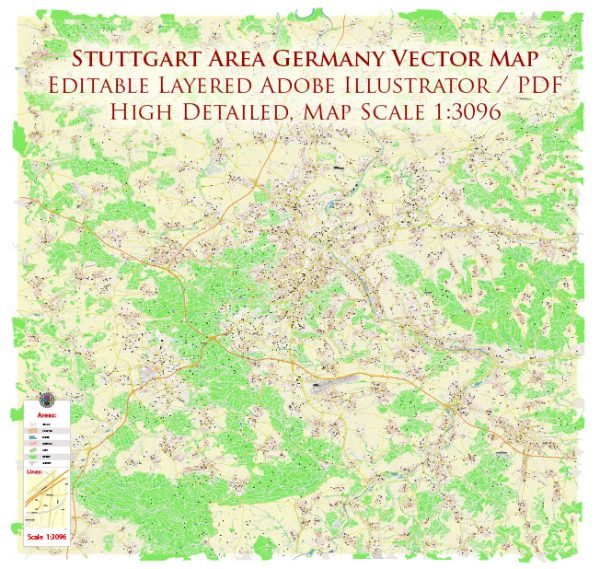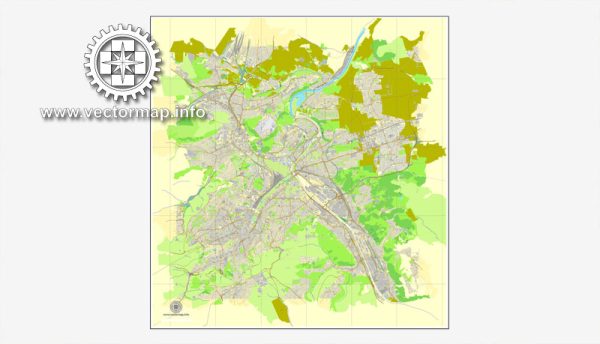Stuttgart, located in the southwestern part of Germany, has a rich history of urban development that spans over many centuries. Here is a brief overview:
- Roman Origins (1st century AD): The area where Stuttgart is situated was initially a Roman settlement. The Romans established a fort in the region, and over time, a civilian settlement grew around it.
- Medieval Period (9th – 15th centuries): Stuttgart evolved as a market town in the medieval period. The Counts of Württemberg played a significant role in the development of the town. In 1312, Stuttgart became the capital of the County of Württemberg, marking the beginning of its importance as a political and administrative center.
- Renaissance and Baroque Periods (16th – 18th centuries): The Renaissance and Baroque periods saw the construction of several significant buildings in Stuttgart. The Solitude Palace and Ludwigsburg Palace are examples of Baroque architecture from this time. The city also grew economically, thanks to trade and the burgeoning ducal court.
- 19th Century Industrialization: The 19th century brought industrialization to Stuttgart, transforming it from a predominantly agricultural and trade-based economy to an industrial one. This led to a population boom as people flocked to the city in search of work.
- World War II and Post-War Reconstruction: Stuttgart, like many other German cities, suffered extensive damage during World War II. The post-war period was marked by reconstruction efforts. The city was redesigned with a mix of modern and traditional architecture.
- Economic Boom and Modernization (1950s – 1980s): Stuttgart experienced significant economic growth during the post-war period, becoming an industrial powerhouse. The automotive industry, with companies like Mercedes-Benz and Porsche headquartered in Stuttgart, played a crucial role in this economic boom.
- Contemporary Urban Development: In recent decades, Stuttgart has continued to evolve with a focus on sustainable urban development. The city has invested in public transportation, green spaces, and cultural amenities. Notable contemporary architectural landmarks include the Mercedes-Benz Museum and the Stuttgart Library.
- Cultural Hub: Stuttgart has established itself as a cultural hub, with numerous museums, theaters, and galleries. The city’s commitment to cultural events and festivals has contributed to its vibrant and dynamic atmosphere.
Overall, Stuttgart’s history of urban development reflects a blend of historical charm, industrial progress, and a commitment to modernity, making it a fascinating city with a diverse architectural and cultural landscape.



 Author: Kirill Shrayber, Ph.D.
Author: Kirill Shrayber, Ph.D.